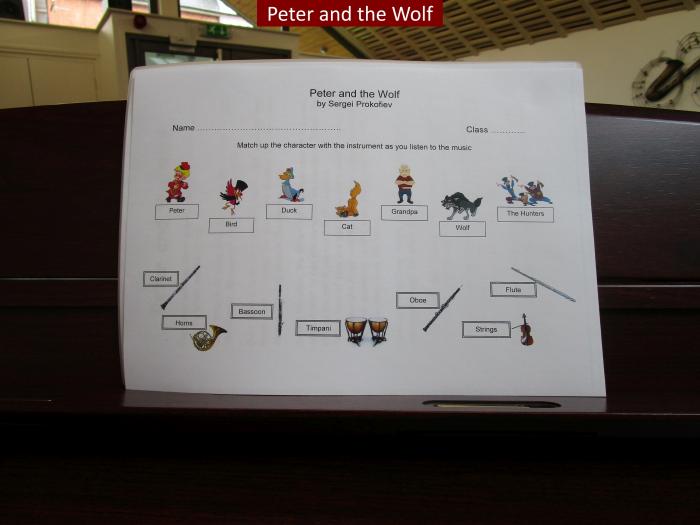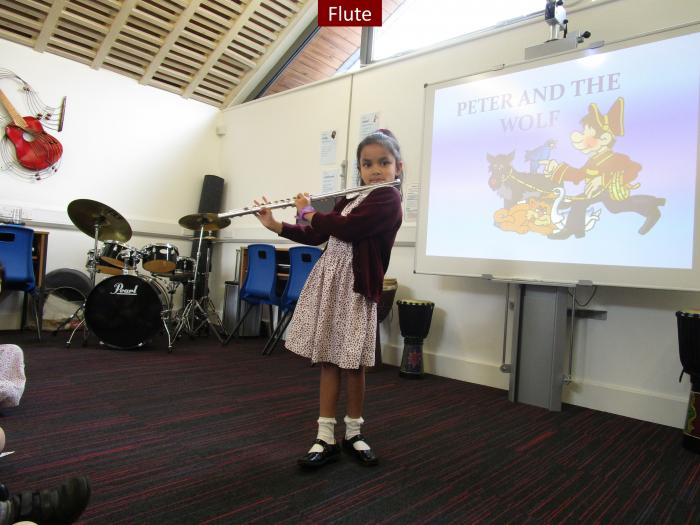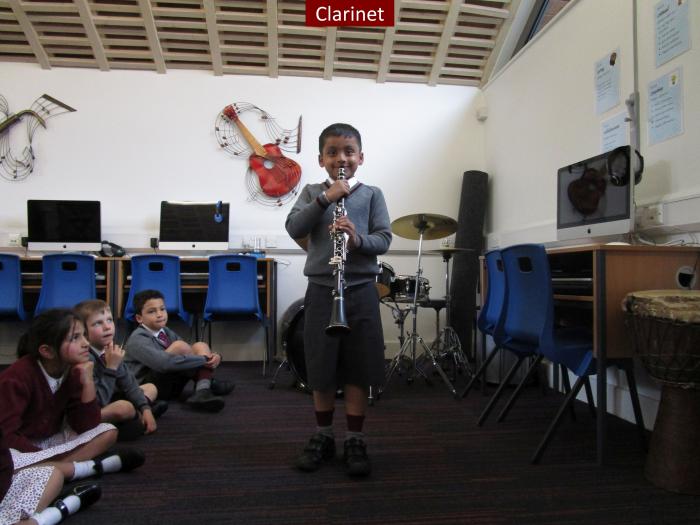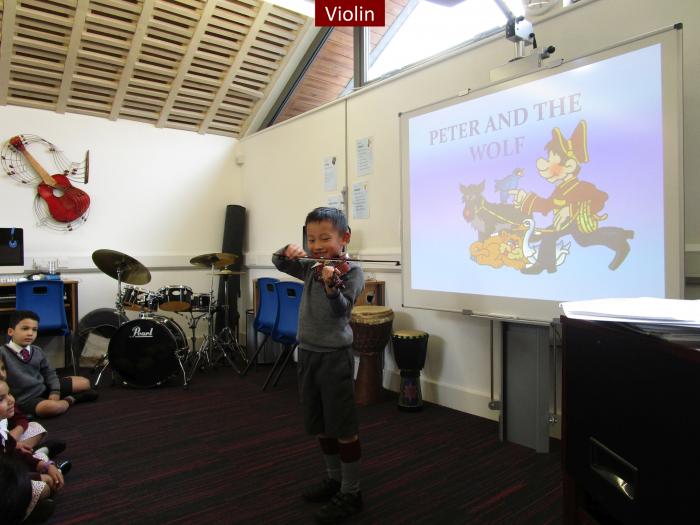



A Musical Story
We all know that every picture tells a story, but the same is also true of music, even purely orchestral pieces. This term the children in 2TS have been learning about how music can create or influence our moods.
In their previous lesson, they matched a story about a haunted house to a particular piece of music because, as Surina put it succinctly, “it sounded spooky”. Aidan’s perceptive suggestion was that the spooky effect was likely to have been the result of the musical instruments used. “Hold that thought,” said Mr Biggs. “It will come in very useful next lesson!”
This week, as an introduction to their exploration of Sergei Prokofiev’s iconic Peter and the Wolf, the children looked at and discussed the different musical instruments that they imagined could feature in the piece. Mr Biggs wanted the children to understand that each instrument is used to represent one of the key characters in the story. To help them visualise, he showed them pictures of the characters – Peter, Grandpa, the duck, the bird, the cat, the hunters and, of course, the wolf.
The first instrument was the flute, and here children who have started music lessons in school had the chance to shine and show their expertise to their classmates. Mr Biggs called budding flautist Hiral to the front of the class. Examining the flute, it seemed immediately obvious that this was an instrument into which the musician should blow; but, when Hiral blew into the mouthpiece, all that could be heard was the rushing sound of air. Observant Tommy thought that Hiral should instead blow across the mouthpiece, which she duly did, and several different notes could be detected. Sid suggested that the buttons on the body of the flute must be used to change the sound, whilst Diyan felt that the reason we could hear notes of varying pitch was because there was more than just air circulating within the instrument. Finally, there came the most important question of all. Which character does the flute represent? Stanley’s very thoughtful answer was that the flute must be the bird because both make a light tweeting sound.
Taran showed the class a clarinet, which Tommy already knew cannot be played unless a reed is fixed to the mouthpiece. Another difference from the flute, pointed out Ariella, is that the clarinet has to be held vertically to be played, as opposed to horizontally for the flute. Tantalisingly, Mr Biggs informed the class that, whilst there certainly is a clarinet in Peter and the Wolf, another of the parts is played by an instrument from the same family, which also uses a reed. What could it be? Your blogger thinks she knows, but she won’t tell, of course.
The last instrument the children looked at was the violin, and Aidan stepped forward to play a scale. Mr Biggs asked how this instrument differed from the other two, and was swamped by a sea of eager hands. Lucas said that you need to use a bow, rather than your mouth, for the instrument to make a sound. Hiral explained that this was because the violin belongs to the string family.
As the lesson drew to a close, Mr Biggs began to read the story of Peter and the Wolf, which turns out to be extremely exciting. Jorge particularly liked the part where Peter managed to grab the tail of the wolf using a lasso.
Next time, 2TS will hear the sound of each character’s instrument before listening to the whole piece of music and matching the characters to the appropriate instrument on a printed sheet. The children can’t wait to hear the musical version of Peter and the Wolf. They will then go on to choose one of the characters and compose their own original piece of character music. By half term, it sounds like we will have an orchestral triumph on our hands!